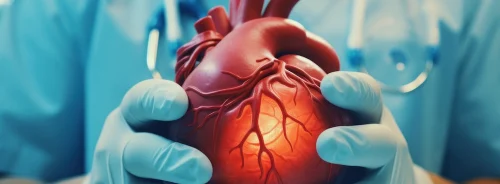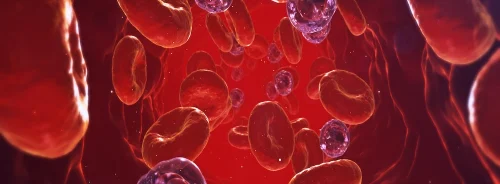Interview with Prof. Geneviève Derumeaux
Chairperson
- ESC Congress 2014-2016 Programme Committee
The spotlight at this year’s ESC
Congress is ‘Environment and
the Heart’. How important is the
environment in cardiology and what
do cardiologists need to know? Despite epidemiological findings
showing increased air pollution related
cardiovascular disease (CVD), the
awareness of cardiologists is relatively
weak. The knowledge of the involved
mechanisms remains moderate. Air
pollution is a major health concern,
which accounts for roughly 3.7 million
global deaths annually, according to
World Health Organization estimates.
Numerous studies have shown acute
and chronic fine particulate air pollution
exposures to be associated with early
death, particularly from cardiovascular
and respiratory diseases. Metals,
which are constituents of particulate
air pollution, have been shown to be
associated with CVD. Airway or parenchymal
inflammatory responses to
particulate matter have been hypothesised
to be the inciting events of a
cascade of pathophysiologic changes
in autonomic cardiac, systemic inflammatory,
and haemostatic activities.
All these processes may ultimately
lead to the acute events associated
with particulate matter exposure. One
of the most important gaps in our
current knowledge regarding particulate
matter-related health effects is the
identification of susceptible subjects.
The environment represents a very
important topic that allows us to unite
the entire cardiology community, from
the lab researchers to the epidemiologists.
It is also a great opportunity
to share our findings and alert policy
makers to the challenges that lie ahead.
What is new at ESC 2015?
At the forefront this year is the
involvement of seven national cardiac
societies through a set of dedicated
sessions titled ‘My NCS@ESC’, aiming
at highlighting the key contribution that
national cardiac societies make. It is
a pioneering project, which is revisiting
the current ESC Guidelines from
national perspectives. NCS are going
to present sessions and clinical cases,
review all the current guidelines, discuss
their implementation in practice in their
countries, and finally assess how they
are implemented through the national
registries and the European Registry.
I believe this is a good example of
cross-fertilisation and cross-collaboration
between the sub-committees
and constituent bodies of the ESC.
A further innovation is the increased
visibility of basic science within our
congress. We are honoured by the
participation of Nobel Prize Laureate
Elizabeth Blackburn, who was awarded
for her discovery of telomerase, a key
element in the ageing process. We know
that the environment contributes to
premature ageing, so we will broach this
topic. Elizabeth Blackburn will deliver
a keynote lecture, and she will chair
a dedicated session on ageing and
cardiovascular disease: ‘A Journey
to Stockholm’. Also new is the Young
Investigator Award (YIA) Ageing and
Senescence, held under the auspices
of the Nobel Prize Winner.
In our effort to further develop the
young communities’ participation we
are introducing special tracks with allied
societies such as Brazil and Japan.
Among other sessions there will be
‘Science@Breakfast’, early morning
practical and interactive 45-minute
sessions for each day’.
Will the ESC be presenting any
guideline updates at the congress?
We have five new guidelines, which we
will be presenting during this meeting.
They are: cardiac death and resuscitation,
chronic pulmonary hypertension,
myocardial disease, pericardial disease
and tumours, myocardial infarction
and NSTEMI syndrome (acute coronary
syndrome). Not only will we have a
classical overview and exemplification
session on the guidelines,but my national cardiac society will be
presenting clinical cases in a dedicated
session. Also, at the end of the
conference on Wednesday morning,
we will have, for the first time, the
highlights of the ESC guidelines.
The abstract programme is an
integral part of any ESC congress.
What makes it so popular among
cardiologists?
While we have received over 11,000
abstract submissions again this year, the
abstract presentation sessions are not
always well attended. This is a pity, as
posters and abstracts represent science
in motion showcasing the latest developments.
We will be adding a number
of improvements and no longer present
posters in paper versions but in dynamic,
electronic versions instead. ‘Advances
in Science’ is our new abstract session
format with two keynote lectures,
giving attendees the opportunity to
interact with each other and draw from
the wealth of knowledge within the
cardiology community present at the
congress. Questions such as ‘How far
are we with this topic?’, ‘What remains
to be investigated?’ and ‘Where are the
present gaps?’ will provide the heart of
the training: live science sessions in
addition to other the other segments,
which are continuing medical education.
How does the ESC involve medical
students and young cardiologists?
Not only do we offer the much-loved
annual ‘Cardiologists of Tomorrow’
track, but also the new ‘Scientists
of Tomorrow’. This is the new group
of young proactive basic and clinical
researchers, who will work closely with
the Council on Basic Cardiovascular
Science to fulfill its mission in promoting
and supporting basic science among
young ESC members. Members of the
‘Scientists of Tomorrow’ will contribute
to the scientific, educational and
advocacy activities of the ESC, paving
the way for its future. Interaction,
integration and communication are
vital to our continued success.
What is the biggest challenge in
preparing such a large congress?
There are a lot of challenges. First,
the programme has to be innovative
and ready very early on. The second
challenge is to offer the kind of content
that attendees are looking for. We need
to provide innovation in science, offer
high quality education, and fulfil the
multitude of expectations for all the
topics. Everything needs to benefit
of cardiac knowledge and education.
I am very grateful to the fantastic
team that helped me put the congress
together. I especially appreciate the
Programme Committee for coordinating
the topics for each specialty
and finding the best to present in an
innovative way, while maintaining the
same level of quality as the previous
year. The 2014 meeting in Barcelona
was very successful. To keep this
quality level is a real challenge, but
I hope we will succeed because we
have new features and we have had
strong collaboration with all the national
societies, the constituent bodies.
We are also integrating societies
from outside Europe that are keen to
participate. Japan provided most of
the abstracts. The fact that we can
integrate innovation and education
is fantastic.
What are you looking forward to the
most at this year’s congress?
It is a matter of integration and cross collaboration.
We have worked not only
towards having all the different topics
covered, but also developed a pathway
that links all the sub-specialties. We
can integrate all the people working
on cardiovascular diseases - from the
nurses to the pharmacists and GPs, and
all the cardiology specialists working
around the cardiovascular patient.
Cardiology is so intensely associated
with other sub-specialties; it also
involves the intensivist, anaesthesiologist,
and the surgeon in case of
surgery. This all-encompassing concept
needs to be developed in real life and
we need to show how people are really
working together with a multidisciplinary
approach. This will be the spotlight in
our programme on Tuesday-an approach
both for the patient and for science,
with the patient at the core.
Source and Image credit: ESC
Latest Articles
ESC, myocardial disease, pericardial disease, tumours
Despite epidemiological findings showing increased air pollution related cardiovascular disease (CVD), the awareness of cardiologists is relatively weak.










